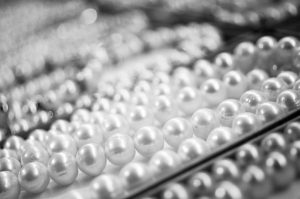Buying Tips When Shopping for Men’s Ties

People, especially the men, have always been attracted to quality ties. Having a well-put-together and coordinated outfit is never complete without a good tie around the neck. And, you will notice that you have a good tie ‘under the hood’ when you notice most people talking about it. Most people are accustomed to buying cheap and low-quality tie versions. So, if you take your time and get a tie that really stands out from the crowd, people will know. In most instances, it is the custom ties that usually prove to be the best.
Ties have been around for a very long time. And since then, they have gone through many different transformations. These transformations are what has also led to the invention and production of different varieties of ties. This makes it more difficult to find a good tie from the piles waiting for you to buy. Here are some beneficial tips that you should use to find an excellent tie.
Proportion
The many different tie varieties also come in different shapes and sizes. It is, therefore, critical that you find the right tie with the right size and shape that fits well with your body frame. The tie’s shape and size can also influence how your outfit looks and stands out.
A good necktie falls at an ideal 3 ¼-inch which is a good width for most men. The tie width is measured from its widest point. The tie width can, however, vary depending on the wearer’s body size. If you happen to be broad, you may choose to go for the 3 ¾-inch width tie to complement your size. The tie width can go as slim as 2 ¾-inches which is good for the slender folks.
Tie lengths vary from one manufacturer to the other. However, the length of a regular necktie lies somewhere around 57-inches and 58-inches. Tie lengths can still go up to 64-inches. You should go for a tie with the perfect length. Your height should be your guiding factor. Short men want to go for the shorter ties. Or they can tie slightly larger knots to use up and cover the lengths of long ties.
Tie back tar
When looking to buy a new tie, this is the one aspect you always want to check before making up your mind. Turn the tie over and look for the stitch which joins both ends of the tie. This is the tie back tar. You can always find them about three quarters down the tie. This stitch is always horizontal and comes with many benefits you may not know about.
For one, it helps to keep the two sides of the tie together which should be obvious. This helps to reinforce the first stitching of the tie.
The tie back tar also helps keep the tie in shape. It helps keep your tie from bubbling up and looking as if it has air pockets within it. These are just some of the few features of the tie back tar which make it an essential feature in any good tie.
The slip knot
You will only always find this feature in the great expensive ties. The slip knot will peek out from the blade tip of the tie. The reason is that it helps reduce the wear and tear that occurs from the continuous tying and untying of ties for years. The slip knot also helps to adjust the tie and ease its tension over the years. This, in turn, helps to return it to its original shape and expand its life.
Fabric
The fabric is king when it comes to the list of features you have to look into when buying a tie. Fabric plays a huge role in determining the type of tie you intend to buy. Most men would prefer to purchase silk ties. And this is proof from the number of silk ties you find in most men’s wardrobes. The main reason behind this is that silk ties are more durable. Despite its softness, silk falls under one of the most durable sets of fabrics in the world. It also has a very high tensile strength which results from its high elastic nature. Silk fabric is also recommended for ties as it helps retain the shape of the ties with moderate resistance to wrinkling.
Other common tie fabrics include cashmere and cotton which are also relatively good and come packed with many different features.
Cut on the bias
An excellent well-constructed tie is always one that has been made of fabric that is cut on the bias, usually at a 45-degree angle. A tie that has been cut on the bias is on that has been cut diagonally. The cut is generally made across the grain of the fabric. This helps the tie to retain its original shape even after knotting. The cut on the bias is what also helps prevent your tie from turning over to one side. This makes it an important feature to want to have a look at.
Shell
The shell of a necktie refers to its body. Well-made ties have up to three different pieces that are fitted together. These pieces include:
- The blade – this is the large end of the necktie
- The tail – this is the smaller thinner portion of the tie
- The gusset – this is the neck piece that joins the two sides
These are some of the most vital aspects to look for when hunting for a good tie.
Final words
There is a wide variety of ties in the world today that come fitting for different occasions. It is, therefore, upon you to know what you are looking for in the tie you want to buy. Also, remember that other features such as your height can also influence the type of tie you by. It is not always about what the tie has or hasn’t, look beyond the tie. Having a selection of quality ties is no easy task. But it is a luxury worth investing in especially if you are the type who attends many important meetings and occasions.






